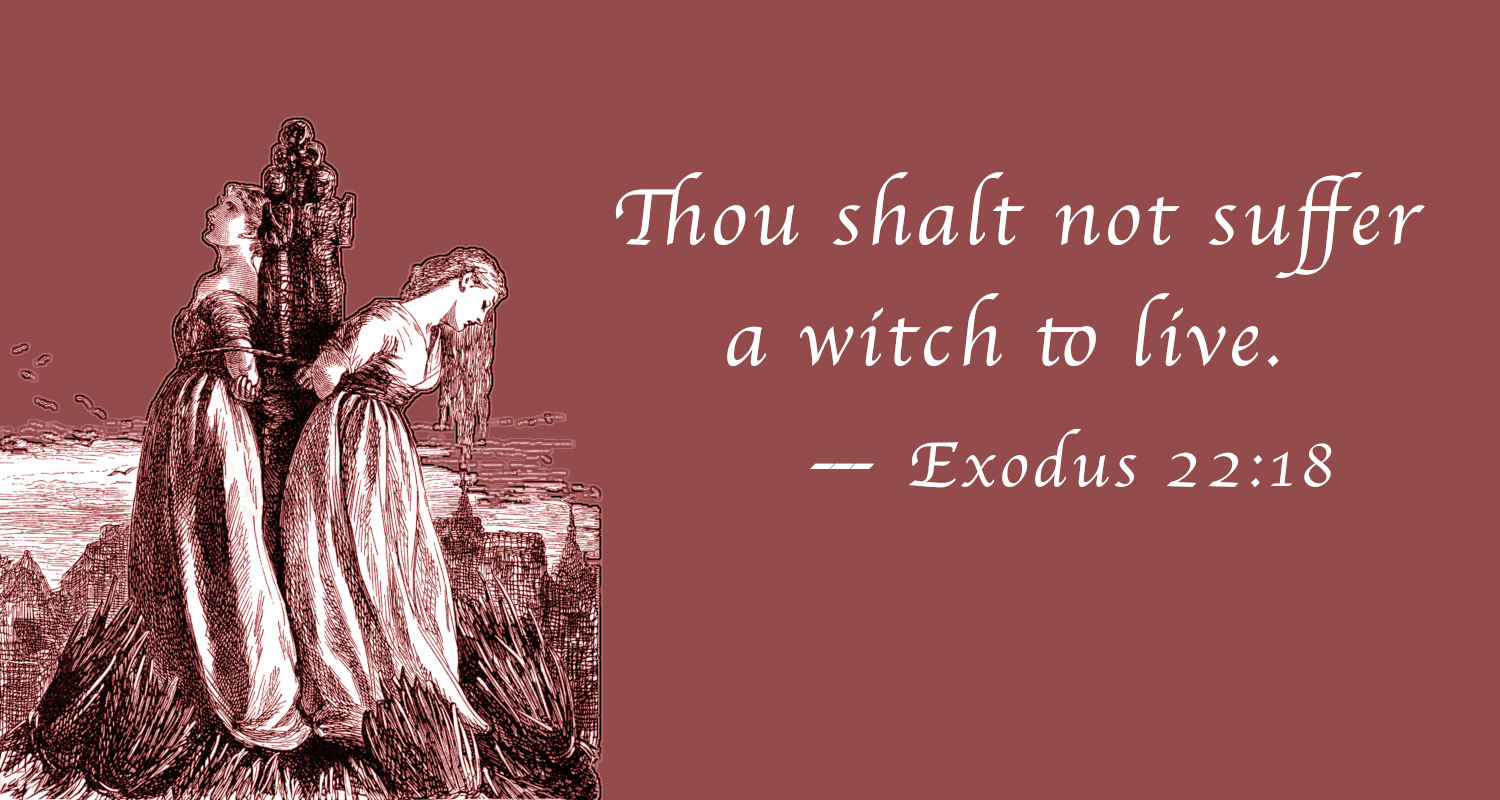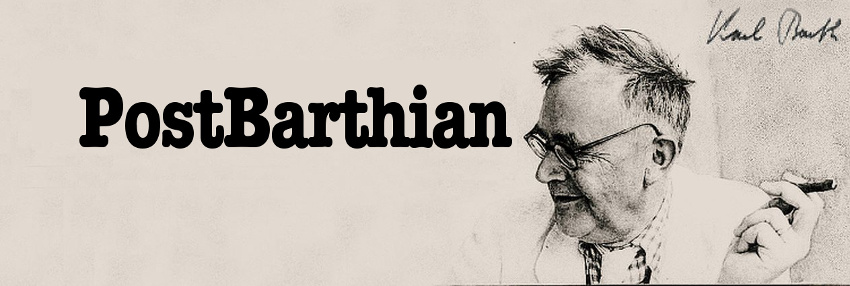
The witch-craze was a surge in mass-killings of predominantly women (80-90%) that happened contemporaneously with the Protestant Reformation (15-18th c.), wherein 10's of thousands (or even a million) human beings were put to death for practicing witchcraft by Catholics and Protestants in many concentrations in Europe and North America. According to Hans Kung "that with the exception of the persecution of the Jews these trials led to the greatest mass killing of human beings by other human beings in Europe which were not the result of war". [1] Kung argues that during the witch-craze "there were at least 100,000 executions (and further punishments like banishments and open contempt)" [2] and was a "mass killing of women by men" [3].
Who were witches?
In the many centuries leading up to the witch-craze, the meaning of term witch developed substantially, deviating substantially from the biblical condemnations of sorceresses. The witch-craze was born out of the superstitious beliefs of the pre-Enlightenment and Reformation era, when people believed the forests were enchanted with mythical creatures and there were common fears of spells and curses, and other superstitions. In the 15th century there was a surge of people tortured and executed for practicing witchcraft that began in the pre-Reformation era and continued throughout the Reformation and did not finally end until the proliferation of the Age of the Enlightenment.
Hans Kung said, "But 'witch' means substantially more than sorceress, and the trial of a witch substantially more than the trial of someone performing malicious magic (maleficium)." Hans Kung describes witches as follows:
"According to the well-known pattern of those who believed in witches, a whole horde of women was said to have:
—made a pact with the Devil, almost a covenant of marriage with the Devil, abjuring God;
—consorted with the Devil, having slept with the Devil (usually often) to seal the pact;
—conjured up the Devil, an evil magic damaging the harvest and other aspects of life and killing animals or human beings
—danced with the Devil, engaging in nocturnal orgies (witches' sabbath) with other witches. "[4]
The Witch-Craze: A Misogynistic Genocide.
The witch-craze was in small partly the result of naive superstition, and in large part an intentional persecution of women. This is the most significant point, that the witch-craze was a "mass killing of women by men" as Hans Kung said. There are other examples of Christian terrorism that targeted people groups, including the persecution of Arabs in the Crusades, lynchings of blacks in the United States (e.g. the K.K.K.), and the Inquisition (which included witch trials). The witch-craze was a distinctive persecution of women by the Church. I believe this fact is wrongly ignored.
Why were women persecuted by the witch-craze? Hans Kung provides a summary of scholarly opinions:
—reactions to bitterness and cursing of individual women from the peasantry;
—patriarchal anxieties about solitary women and their often quite real knowledge of medicine and contraception;
—the hostile attitude of the trained doctors (who first appeared with the universities), as opposed to popular medicine and the midwives and healers with no professional training who had been available to the people all down the centuries, with their often well-tried and traditional 'secret knowledge' (especially about giving birth, birth control and healings of all kinds);
—women as scapegoats for impotence and barrenness, for the failure of harvests, disease among cattle and catastrophe, sickness and death;
—a general xenophobia replacing hostility to the Jews (which after all the expulsions largely lacked any focus);
—the sexual obsessions and fantasies of celibate church inquisitors who showed interest in the alleged perversions, obscenities and orgies (even with demons) of women with an insatiable lust, vilifying the witches as followers of Satan, so that they became a dark feminine principle (this was compensated for on the other side by the idealization of women in Mary—above the senses, pure and conceived without a stain);
—the reaction of the church hierarchy and the absolutist authorities to an underground, uncontrollable popular culture;
—the confessionalizing which was interested in a far-reaching disciplining of the thought and behavior of subjects.[5]
The Origin of the Witch-Craze
It is futile to blame the witch-craze upon Protestants, Catholics or any other Christian sect alone because the guilt for it is collectively shared by the entire Christian tradition, including the Biblical writings. Hans Kung rightly said "Certainly Christianity had always had it in for witches; and the statement in the Hebrew Bible, 'You shall not allow a sorceress to live' (Ex 22:18), had been the death of many witches." [6] Is this not an example of the Bible's capacity for error (as Karl Barth said), or even a sinful commandment for the extermination of innocent life that has been abolished by the gospel of Jesus?
The Bible is not entirely to blame for the genesis of the witch-craze because it is ultimately a human witness to Gospel of Jesus Christ, and according to this Gospel, the death of Jesus is the abolition of every form of capital punishment (obviously including burning witches) and therefore the Gospel corrects the Bible's capacity for the error of capital punishment—as Karl Barth rightly said, "For from the point of view of the Gospel there is nothing to be said for its institution, and everything against it."
In defense of the Bible, Christian theologians are to blame for broadening the term witch in the vernacular of the witch-craze to assume a different meaning than that of the biblical condemnation of sorceresses (c.f Ex 20:18) as I summarized above. Christian theologians are also guilty for broadening the meaning of witch, beyond the biblical usage, and therefore are also to blame for the rise of the witch-craze, in particular pre-Enlightenment theologians who demonically developed detailed demonologies, and those who used the bible to extend capital punishment to all kinds of superstitions, and to those who theologians who allowed for unjust trials and barbaric and inhumane torture for punishing criminals. For instance, John Calvin writes in his exposition of Exodus 22:18 "Since such illusions carry with them a wicked renunciation of God, no wonder that He would have them [witches] punished with death. But since this pestilent crime would be no more tolerable in a man than a woman, it has been probably supposed that the law was directed against women, because their sex is more disposed to superstition."
Who is to Blame for the Witch-Craze?
In Christianity: Essence, History, and Future, Hans Kung identifies four guilty parties to blame for the witch-craze: 1) the scholastic theologians, 2) Papacy and Curia, 3) the emperor and the secular authorities, and 4) church people themselves. [7] I'll summarize these four points.
1. Scholastic Theologians: As I mentioned, Christian theologians are to blame for the preconditions that allowed the witch-craze to arise. Kung argues that "the scholastic theologians, especially Thomas Aquinas, developed an extensive demonology in which, following Augustine, the doctrine of a pact with the Devil was used as a basis for a theory of superstition." [8] (For instance the random theory, and other theories of atonement that feature a deal with the Devil). These preconditions were codified and "incorporated into the theological system" and allowed for the publication in 1487 of this pernicious Malleus maleficarum, commonly known in english as the Hammer of the Witches first translated by Montague Summers. The Hammer of the Witches was a best selling witch-hunter handbook that was used for proving the existence of witches and exterminating them via witch-hunts, witch-trials and witch burnings. Additionally, a general misogyny among the scholastic writers, resulted in a cruel targeting of women.
2. Papacy and Curia: Pope Innocent VIII, "who with his bull Summis desiderantes affectibus of 1474 gave powerful encouragement to the witch-craze and had witches tried, but on the other hand did not hesitate to recognize his illegitimate children publicly and have their marriages celebrated in the Vatican with pomp and splendour." [9] Kung keenly notices that this bull of Innocent VII was included as an introduction to the Hammer of the Witches but has been quietly elided from Denzinger's The Sources of Catholic Dogma.
3. Emperor and Secular Authorities: The witch-craze obtained "a legal basis for the mass implementation of witch trials" [10], established by "Charles V's new (Roman) procedural law of 1532 ('Carolina')." [11] The Inquisition was already in place and "now the Inquisition process was carried out completely by the state" [12] for the prosecution of witches. Additionally, the witch-craze was not an era of human rights and justice, and people were accused of witchcraft by unknown accursers and tortured until they confessed.
4. Church people themselves: "Simple village gossip, a person who looked abnormal or behaved abnormally, hatred, envy, enmity or avarice could be the beginnings of 'petitions' to authorities for protection from witches which then set the whole machinery in motion. However, the background to this is the archaic anxiety about magical knowledge and practices which was so widespread among the people." [13]
A selection from the bull of Pope Innocent VIII that describes the alleged behavior of witches and also names Henry Kramer and James Sprenger (authors of the Hammers of the Witches) as sanctioned Inquisitors:
It has indeed lately come to Our ears, not without afflicting Us with bitter sorrow, that in some parts of Northern Germany, as well as in the provinces, townships, territories, districts, and dioceses of Mainz, Cologne, Tréves, Salzburg, and Bremen, many persons of both sexes, unmindful of their own salvation and straying from the Catholic Faith, have abandoned themselves to devils, incubi and succubi, and by their incantations, spells, conjurations, and other accursed charms and crafts, enormities and horrid offences, have slain infants yet in the mother's womb, as also the offspring of cattle, have blasted the produce of the earth, the grapes of the vine, the fruits of the trees, nay, men and women, beasts of burthen, herd-beasts, as well as animals of other kinds, vineyards, orchards, meadows, pasture-land, corn, wheat, and all other cereals; these wretches furthermore afflict and torment men and women, beasts of burthen, herd-beasts, as well as animals of other kinds, with terrible and piteous pains and sore diseases, both internal and external; they hinder men from performing the sexual act and women from conceiving, whence husbands cannot know their wives nor wives receive their husbands; over and above this, they blasphemously renounce that Faith which is theirs by the Sacrament of Baptism, and at the instigation of the Enemy of Mankind they do not shrink from committing and perpetrating the foulest abominations and filthiest excesses to the deadly peril of their own souls, whereby they outrage the Divine Majesty and are a cause of scandal and danger to very many. And although Our dear sons Henry Kramer and James Sprenger, Professors of Theology, of the Order of Friars Preachers, have been by Letters Apostolic delegated as Inquisitors of these heretical pravities . . . [14]
The end of the Witch Craze
Hans Kung argues that it was the Age of Enlightenment that finally ended the witch-craze. Kung recognizes that the witch-craze began before the Reformation, but the Reformation participated in it and did not stop the witch-craze. Kung also reminds us that there were catholics such as Friedrich von Spee who anonymously published a work Legal Objections to the Witch Trials (Cautio criminalis) in 1631 and famous Protestants such as "Christian Thomasius who attacked the idea of pacts with the Devil and the whole business of judgments on witches." [15]
A final word is that Karl Barth was right when he said that believing in demons makes us a little demonic. Remember all the women who died because of demonologies that developed into the witch-craze that raged for four centuries. The church would be better off if it abandoned more of its beliefs in the Devil and listened to the Enlightenment theologians.
Sources:
1. Hans Küng. Christianity: Essence, History, Future. Continuum, 1996. p. 614.
2. Küng. Ibid. p. 614.
3. Küng. Ibid. p. 614.
4. Küng. Ibid. p. 610.
5. Küng. Ibid. p. 613.
6. Küng. Ibid. p. 610.
7. Küng. Ibid. pp. 611-2.
8. Küng. Ibid. p. 611.
9. Küng. Ibid. p. 476.
10. Küng. Ibid. p. 612.
11. Küng. Ibid. p. 612.
12. Küng. Ibid. p. 612.
13. Küng. Ibid. p. 612-3.
14. Pope Innocent VIII. Malleus Maleficarum (Hammer of the Witches), "Summis desiderantes affectibus" tr. Montague Summers, 1928
15. Küng. Ibid. p. 612.
16. Küng. Ibid. p. 612.
16. Hammer of the Witches title page, 1669 edition. Source wikipedia



![Hammer of the Witches [16]](https://postbarthian.com/wp-content/uploads/2019/06/lossy-page1-531px-Sprenger_-_Malleus_maleficarum_1669_-_BEIC_9477645.tiff-221x300.jpg)
Leave a comment